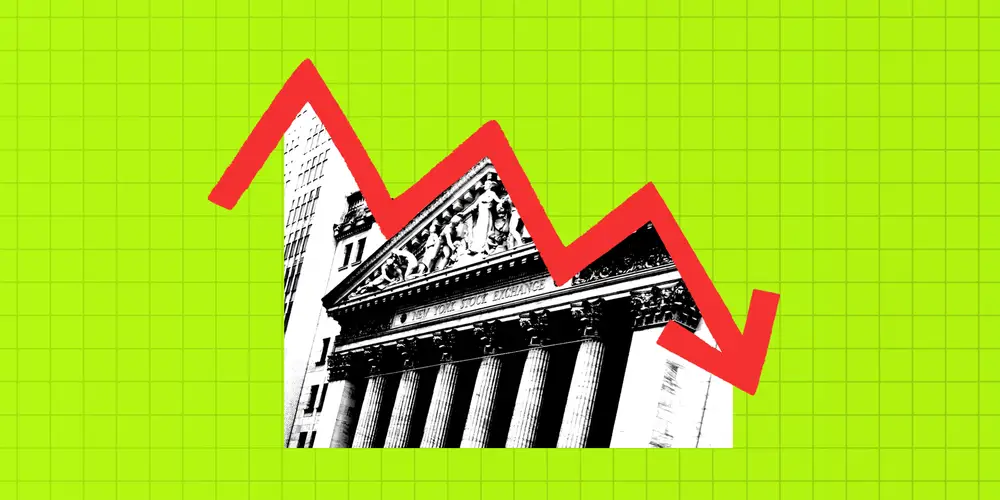These are the top 3 risks to the US stock market rally, according to Deutsche Bank

Inflation is one risk that could weigh on stocks, particularly if prices in the economy remain sticky, Deutsche Bank said.
US stocks have seen stellar gains this year, but there are hurdles that could derail the bull rally, according to Deutsche Bank.
In a note to clients on Tuesday, the bank highlighted three potential headwinds that could threaten the momentum in stocks. The benchmark S&P 500 has climbed 26% year-to-date, gaining 3% in the last month alone on hopes Donald Trump’s presidency will boost asset prices.
“But whilst markets might look invulnerable right now, it’s worth remembering there’ve actually been several wobbles this year already,” Henry Allen, a Deutsche macro strategist, wrote. “So given how markets have already reacted to various shocks this year, it’s clear that any one of these factors could drive a fresh selloff, particularly if they became a more persistent and longer-lasting problem.”
“And since valuations are more elevated now relative to the last couple of years, that means on paper, the scope for further gains is now more limited,” he added.
Here are three things the bank thinks could pose a risk to investors.
1. An economic downturn
Most economists think the US economy is on track for a soft-landing, a scenario in which inflation cools without sparking a severe recession.
However, if the economy weakens more than expected, that poses a major risk to equities, Allen said, pointing to this summer’s steep stock sell-off driven by weak jobs data and fears that the economy was stumbling after the Fed’s aggressive rate-hike campaign.
“Fortunately, that month marked some of the worst of the US data, which then started to improve again. But the fact that we had a sizeable selloff, even though the data wasn’t pointing to a recession, begs the question as to how severe it could have been if the data did start to point towards a recession and show an outright contraction. After all, we know that recessions are one of the worst things possible for risk assets,” he added.
Expectations for growth are also “much higher” for 2025, Allen said, with Wall Street expecting GDP growth to remain above 2% next year. That means it will be harder for the data to meet or exceed the market’s expectations, he added.
2. Geopolitical turmoil
Geopolitical tensions escalated in the Middle East earlier this year, causing oil prices to spike and stock prices to see a swift decline. Stocks also stumbled last week after Ukraine launched US- and British-made missiles at Russia, leading Russia to retaliate by launching a new hypersonic missile at Ukraine.
“So markets are clearly very jittery to any geopolitical escalation, it’s just that in each case, the worst-case fears of a wider conflict didn’t actually materialize. However, if a fresh conflict or a major escalation did happen, then we know from recent experience that markets can react very negatively, as seen after Russia’s invasion of Ukraine in 2022,” Allen said.
3. Rising inflation
Inflation has cooled from a high of around 9% in 2022, with consumer prices rising 2.6% year-over-year in October. That was on par with economists’ expectations, though a slight acceleration from the pace in the prior month.
Markets, meanwhile, have reacted negatively to several inflation scares earlier in the year, causing stocks to fall, bonds to sell-off, and rate cut expectations to dial back.
If inflation were to remain at higher levels, those consequences would continue as markets expect a more hawkish stance from the Fed, Allen said.
“This is becoming an increasing risk as we head into 2025. Fortunately, we have avoided the sort of inflation persistence that happened in the 1970s. But in the US, inflation is still above target even now, and our economists forecast that headline and core PCE should remain above 2% throughout 2025 and 2026,” Allen said, referring to Personal Consumption Expenditures inflation, the Fed’s preferred inflation measure.
Some Wall Street forecasters have cautioned that the latest market rally looks overdone as the indexes hover near all-time highs. Still, according to the AAII’s latest Investor Sentiment Survey, only 33% of investors said they were bearish on stocks over the next six months, and analysts at the biggest banks have issued mostly upbeat forecasts for the coming year.






